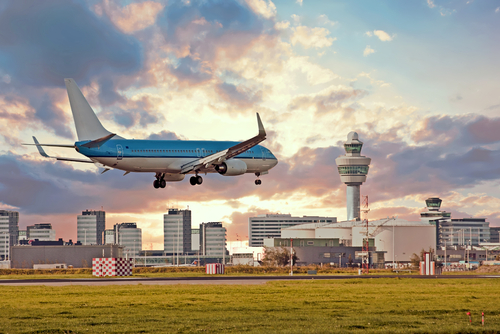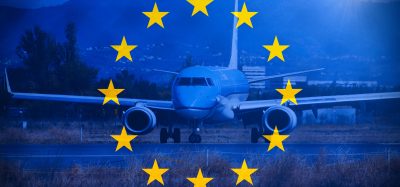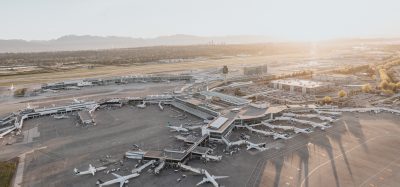Airlines set to earn 2.7% net profit margin on record revenues in 2024, says IATA
- Like
- Digg
- Del
- Tumblr
- VKontakte
- Buffer
- Love This
- Odnoklassniki
- Meneame
- Blogger
- Amazon
- Yahoo Mail
- Gmail
- AOL
- Newsvine
- HackerNews
- Evernote
- MySpace
- Mail.ru
- Viadeo
- Line
- Comments
- Yummly
- SMS
- Viber
- Telegram
- Subscribe
- Skype
- Facebook Messenger
- Kakao
- LiveJournal
- Yammer
- Edgar
- Fintel
- Mix
- Instapaper
- Copy Link
Posted: 13 December 2023 | International Airport Review | No comments yet
IATA announced strengthened profitability projections for airlines in 2023, which will then largely stabilise in 2024.


IATA announced strengthened profitability projections for airlines in 2023, which will then largely stabilise in 2024.
The International Air Transport Association (IATA) announced strengthened profitability projections for airlines in 2023, which will then largely stabilise in 2024.
However, net profitability at the global level is expected to be well below the cost of capital in both years. Very significant regional variations in financial performance remain.
Outlook highlights by IATA include:
- Airline industry net profits are expected to reach $25.7 billion in 2024 (2.7% net profit margin). That will be a slight improvement over 2023 which is expected to show a $23.3 billion net profit (2.6% net profit margin).
- In both 2023 and 2024 return on invested capital will lag the cost of capital by 4p.p., as interest rates around the world have risen in response to the sharp inflationary impulse.
- Airline industry operating profits are expected to reach $49.3 billion in 2024 from $40.7 billion in 2023.
- Total revenues in 2024 are expected to grow 7.6% year over year to a record $964 billion.
- Expense growth is expected to be slightly lower at 6.9% for a total of $914 billion.
- Some 4.7 billion people are expected to travel in 2024, an historic high that exceeds the pre pandemic level of 4.5 billion recorded in 2019.
- Cargo volumes are expected to be 58 and 61 million tonnes in 2023 and 2024, respectively.
“Considering the major losses of recent years, the $25.7 billion net profit expected in 2024 is a tribute to aviation’s resilience. People love to travel and that has helped airlines to come roaring back to pre-pandemic levels of connectivity. The speed of the recovery has been extraordinary; yet it also appears that the pandemic has cost aviation about four years of growth. From 2024 the outlook indicates that we can expect more normal growth patterns for both passenger and cargo,” said Willie Walsh, IATA’s Director General.
“Industry profits must be put into proper perspective. While the recovery is impressive, a net profit margin of 2.7% is far below what investors in almost any other industry would accept. Of course, many airlines are doing better than that average, and many are struggling. But there is something to be learned from the fact that, on average airlines will retain just $5.45 for every passenger carried. That’s about enough to buy a basic ‘grande latte’ at a London Starbucks. But it is far too little to build a future that is resilient to shocks for a critical global industry on which 3.5% of GDP depends and
from which 3.05 million people directly earn their livelihoods. Airlines will always compete ferociously for their customers, but they remain far too burdened by onerous regulation, fragmentation, high infrastructure costs and a supply chain populated with oligopolies,” said Walsh.
Outlook Drivers
IATA found that overall revenues in 2024 are expected to rise faster than expenses (7.6% vs. 6.9%), strengthening profitability. While operating profits are expected to increase by 21.1% ($40.7 billion in 2023 to $49.3 billion in 2024), net profit margins increased at less than half the pace (10%) largely due to increased interest rates expected in 2024.
Revenue: Industry revenues are expected to reach an historic high of $964 billion in 2024. An inventory of 40.1 million flights is expected to be available in 2024, exceeding the 2019 level of 38.9 million and up from the 36.8 million flights expected in 2023.
- Passenger revenues are expected to reach $717 billion in 2024, up 12% from $642 billion in 2023. Revenue passenger kilometers (RPKs) growth is expected to be 9.8% year on year. While that is more than double the pre-pandemic growth trend, 2024 is expected to mark the end of the dramatic year-on-year increases that have been characteristic of the recovery in 2021-2023.
- The high demand for travel coupled with limited capacity due to persistent supply chain issues continues to create supply and demand conditions supporting yield growth. Passenger yields in 2024 are expected to improve by 1.8% compared to 2023. Reflecting the tight supply and demand conditions, efficiency levels are high with the load factor expected to be 82.6% in 2024, slightly better than 2023 (82%) and the same as in 2019. IATA’s November 2023 passenger polling data supports the optimistic outlook.
- A third of travelers polled say they are traveling more than they did pre-pandemic. Some 49% indicate that their travel habits are now similar to pre-pandemic. Only 18% said that they were traveling less.
- Looking ahead, 44% say that they will travel more in the next 12 months than in the previous 12 months. Only 7% say they will travel less and 48% expect to maintain similar levels of travel in the coming 12 months as in the previous 12 months.
- Cargo revenues are expected to fall to $111 billion in 2024. That is down sharply from an extraordinary peak of $210 billion in 2021, but it is above 2019 revenues which were $101 billion. Yields will continue to be negatively impacted by the continued growth of belly capacity (related to strong growth on the passenger side of the business) while international trade stagnates. Yields are expected to further correct towards pre-pandemic levels with a -32.2% decline in 2023 followed by a -20.9% decline expected in 2024. They will remain high by historical standards, however. Note that yield progression has been extraordinary in these last years (-8.2% in 2019, +54.7% in 2020, +25.9% in 2021, +7% in 2022, -32.2% in 2023). Expenses: are expected to grow to $914 billion in 2024 (+6.9% on 2023 and +15.1% on 2019).
- Fuel price is expected to average $113.8/barrel (jet) in 2024 translating into total fuel bill of $281 billion, accounting for 31% of all operating costs. Airlines are expected to consume 99 billion gallons of fuel in 2024
High crude oil prices are expected to continue to be further exaggerated for airlines as the crack spread (premium paid to refine crude oil into jet fuel) is expected to average 30% in 2024. Industry CO2 emissions in 2024 are expected to be 939 million tonnes from consumption of 99 billion gallons of fuel.
The aviation industry will increase its use of Sustainable Aviation Fuels (SAF) and carbon credits to reduce its carbon footprint. We estimate that SAF production could rise to 0.53% of airlines’ total fuel consumption in 2024, adding USD 2.4 billion to next year’s fuel bill. In addition, the Carbon Offsetting and Reduction Scheme for International Aviation (CORSIA) is a global market-based carbon offsetting mechanism designed to stabilise international aviation emissions. The CORSIA-related costs are estimated at $1 billion in 2024.
- Non-fuel expenses have been controlled relatively well by airlines despite inflationary pressures. With fixed costs being distributed over a larger scale of activity as the industry recovered from the pandemic, non-fuel unit costs are falling in line with pre-pandemic level. In 2024 we expect non-fuel unit costs of 39.2 cents per available tonne kilometer (ATK) in 2024 which is 1.6% above 2023 levels and matches 2019 levels. Total non-fuel costs are expected to reach $633 billion in 2024.
Risks
IATA identified Industry profitability is fragile and could be affected (positively or negatively) by many factors:
- Global Economic developments: Easing inflation, low unemployment rates, and strong demand for travel are all positive developments. Nonetheless, economic strains could arise. In China, for example, slow growth, high youth unemployment and disarray in property markets if not managed properly, could impact global business cycles. Similarly, should tolerance of high interest rates weaken, and unemployment rise significantly, the strong consumer demand that has supported the recovery could weaken.
- War: The operational impacts of the Ukraine war and the conflict in Israel war have been largely limited to re-routings due to airspace closures. On the cost side, the conflicts have pushed up oil prices which is impacting airlines globally. An unexpected peace in either or both cases would bring benefits to the industry, but any escalation could produce a radically different global economic scenario to which aviation would not be immune.
- Supply Chains: Supply chain issues continue to impact global trade and business. Airlines have been directly impacted by unforeseen maintenance issues on some aircraft/engine types as well as delays in the delivery of aircraft parts and of aircraft, limiting capacity expansion and fleet renewal.
- Regulatory Risk: On the regulatory front, airlines could face rising costs of compliance, and additional costs pertaining to passenger rights regimes, regional environment initiatives, and accessibility requirements.
2023
Airline profitability for 2023 performed better than expected in IATA’s June outlook. Revenues for 2023 are now expected to reach $896 billion ($93 billion higher than expected). Expenses also grew to $855 billion ($74 billion higher than the previous forecast). That translated into a $23.3 billion industry wide net profit. While that is significantly above the $9.8 billion forecast in June, the additional $13.5 billion profit is equal to just 1.4% of revenue. The net profit margin is just 2.6%
meaning that airlines will have earned on average $5.44 per passenger carried in 2023.
The improvement was entirely driven by the passenger business which saw revenues increase compared to the previous forecast by $96 billion, to $642 billion. Cargo revenues in 2023 were $134.7 billion, which underperformed the $142.3 billion expected in June.
The Traveller’s viewpoint
Air travel continues to deliver value to consumers. A recent public opinion poll (14 countries, 6,500 respondents who have taken at least one trip in the last year) revealed that 97% of travellers expressed satisfaction with their travel. Moreover, 88% agreed that air travel makes their lives better and 80% agreed that air travel is good value for money.
Consumers can expect airfares to continue to track rising costs, particularly oil. IATA data, however, show that competition continues to drive price benefits for consumers. The average real return air fare in 2023 is expected to be $254 which is 20% lower than the average fare of $315 in 2019 (measured in constant 2018 dollars).
Passengers are counting on a safe, sustainable, efficient and profitable airline industry. IATA public opinion polling demonstrated the important role that travellers see the airline industry playing:
- 89% agreed that air travel is a necessity for modern life
- 89% agreed that air connectivity is critical to the economy
- 88% said that air travel has a positive impact on societies, and
- 83% said that the global air transport network is a key contributor to the UN Sustainable Development Goals (SDGs)
Aviation remains committed to its goal of achieving net zero emissions by 2050. Travelers are expressing high levels of confidence in this commitment, with 84% believing it is the right goal, 79% saying that we will be able to fly sustainably, and 78% agreeing that aviation leaders are taking the climate challenge seriously

















